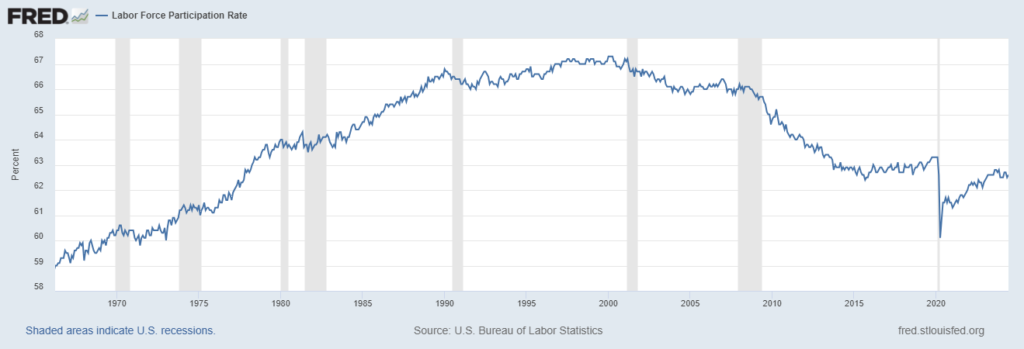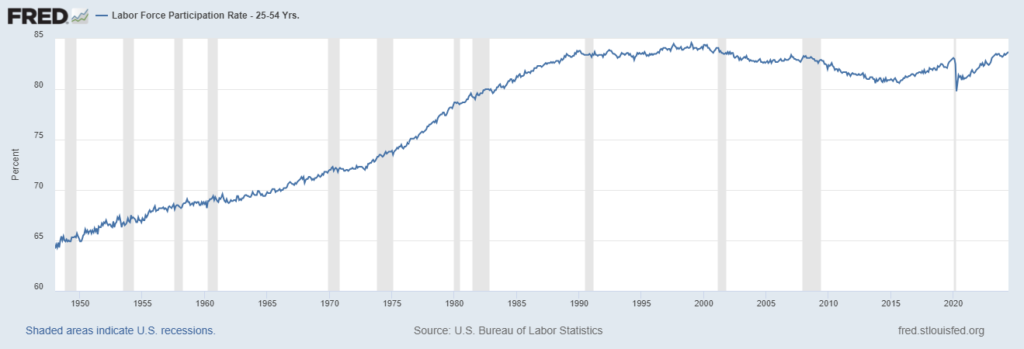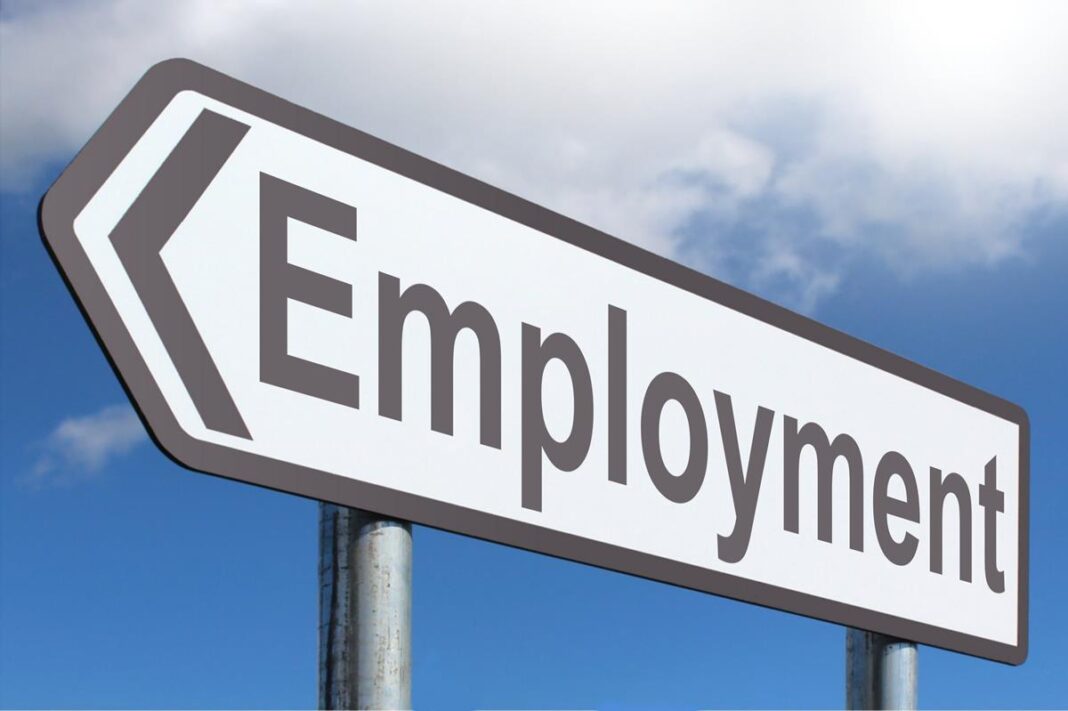Total nonfarm payroll employment increased by 206,000 in June, and the unemployment rate
changed little at 4.1 percent, the U.S. Bureau of Labor Statistics reported today. Job
gains occurred in government, health care, social assistance, and construction.
Both the unemployment rate, at 4.1 percent, and the number of unemployed people, at 6.8
million, changed little in June. These measures are higher than a year earlier, when the
jobless rate was 3.6 percent and the number of unemployed people was 6.0 million.
Total nonfarm payroll employment increased by 206,000 in June, similar to the average monthly
gain of 220,000 over the prior 12 months. In June, job gains occurred in government, health
care, social assistance, and construction.
Government employment rose by 70,000 in June, higher than the average monthly gain of 49,000
over the prior 12 months. Over the month, employment increased in local government, excluding
education (+34,000) and in state government (+26,000).
Health care added 49,000 jobs in June, lower than the average monthly gain of 64,000 over the
prior 12 months. In June, employment rose in ambulatory health care services (+22,000) and
hospitals (+22,000).
Employment in social assistance increased by 34,000 in June, primarily in individual and
family services (+26,000). Over the prior 12 months, social assistance had added an average of
22,000 jobs per month.
Construction added 27,000 jobs in June, higher than the average monthly gain of 20,000 over
the prior 12 months.
Retail trade employment changed little in June (-9,000), after trending up earlier in the
year. Furniture, home furnishings, electronics, and appliance retailers lost 6,000 jobs over
the month, while warehouse clubs, supercenters, and other general merchandise retailers gained
5,000 jobs.
Employment in professional and business services changed little in June (-17,000) and has
shown little change over the year. Temporary help services employment declined by 49,000 over
the month and is down by 515,000 since reaching a peak in March 2022. Employment in
professional, scientific, and technical services continued to trend up in June (+24,000).
Employment showed little change over the month in other major industries.
Commentary
The employment report was about as expected although the unemployment rate rose 0.1% to 4.1%. That is, however, due to a positive signal from the household report which showed a rise in the civilian labor force of 277,000. The labor force participation rate also rose by 0.1% to 62.1%. The trend for the overall participation rate remains, however, in a downtrend, largely owing to the retirement of the Baby Boom generation.

The participation rate for prime working age, 25-54 years old, remains near a secular high.

Average hourly earnings, a key indicator of potential inflation, rose an as expected 0.3% month to month and 3.9% year over year. That continues a downtrend toward the pre-COVID trend.

The overall numbers were aided by a jump of 70,000 in government jobs, which isn’t that surprising in an election year. Private payrolls were up a less than expected 136,000.
Those working part time for economic reasons fell by 199,000 while part time for non-economic reasons fell by 321,000.
One negative of note are the negative revisions to the last two reports. April’s total was revised lower by 57,000 to just 108,000 while May was revised down by 54,000 to 218,000. Negative revisions are often seen when the jobs market is softening.
The jobs market, like the overall economy, appears to be slowing somewhat. It is not, in our opinion, consistent with recession – yet. We do not expect GDP estimates for Q2 to change on this report.




